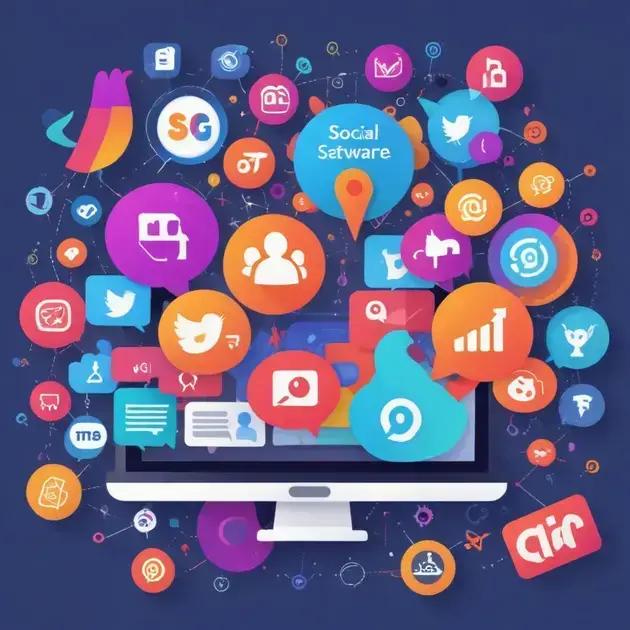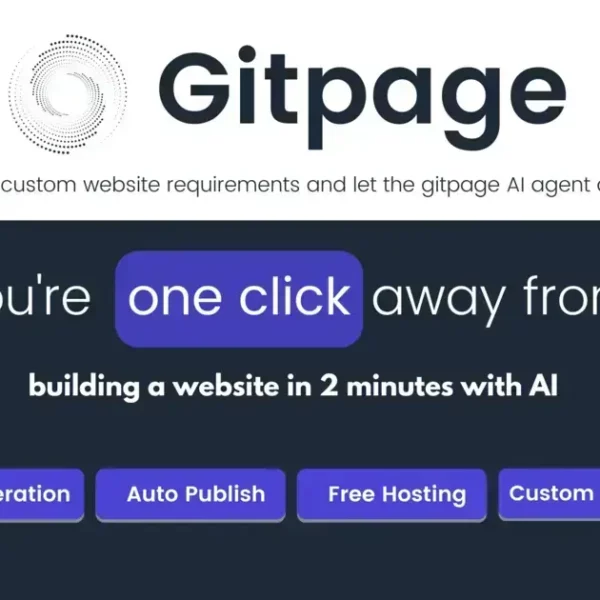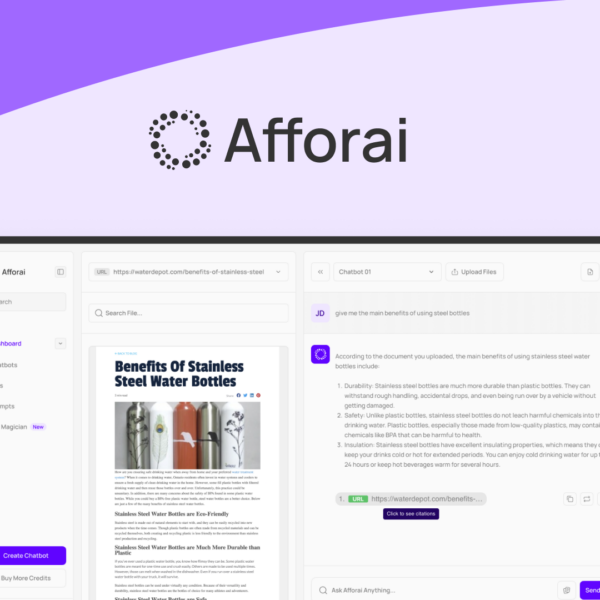Selling software encompasses tools designed to enhance sales processes, featuring user-friendly interfaces, robust analytics, and AI integration. Key trends include subscription pricing, cloud solutions, and a strong focus on data security, making it essential for businesses to adapt and select the best solutions for their needs.
Selling software has become a critical component for businesses striving to thrive in a competitive landscape. In this article, we’ll dive into the intricacies of the selling software market, explore its essential features, share effective marketing strategies, and provide insights into future trends.
Understanding the Selling Software Landscape
Understanding the selling software landscape is crucial for businesses looking to enhance their sales processes. Selling software includes various tools designed to streamline operations, boost productivity, and improve customer interactions. A clear comprehension of available options can help businesses select the right solutions that cater to their specific needs.
Types of Selling Software
There are different categories of selling software, including Customer Relationship Management (CRM) systems, e-commerce platforms, and point of sale (POS) systems. CRMs help manage customer relationships, track leads, and streamline communications. E-commerce platforms facilitate online transactions, while POS systems support sales in physical stores and track inventory.
Key Features of Selling Software
When evaluating selling software, consider essential features like user-friendliness, integration with other tools, and analytics capabilities. A good selling software solution should provide insights into sales performance, customer behaviors, and market trends.
Importance of Scalability
As businesses grow, their needs will change. Therefore, it’s vital to choose selling software that can scale with your business. Look for solutions that allow you to add new functionalities or increase capacity without significant disruptions.
Future Trends in Selling Software
The selling software landscape is continually evolving. Cloud-based solutions, artificial intelligence integration, and mobile accessibility are trends shaping the future. Companies must stay informed about these trends to remain competitive in their sales efforts.
Key Features to Look for in Selling Software

When selecting selling software, it is crucial to understand the key features that can directly impact your business’s success. Different software solutions come with various functionalities that can suit a range of needs.
User-Friendly Interface
A user-friendly interface is essential for both your team and your customers. The software should be easy to navigate, allowing users to access tools and information without extensive training.
Integration Capabilities
Look for selling software that can integrate smoothly with your existing systems. This can include CRM platforms, email marketing tools, and accounting software. Proper integration saves time and improves data accuracy.
Customizable Solutions
Your business is unique, and your selling software should reflect that. Choose a solution that allows for customization of features and functionalities to meet your specific requirements. This flexibility can enhance the effectiveness of your sales processes.
Advanced Analytics
Analytics features enable you to track sales performance, customer behavior, and market trends. By utilizing data-driven insights, you can make informed decisions that can optimize your sales strategies and boost revenue.
Customer Support and Training
Robust customer support and training resources are necessary for successful software implementation. Ensure the selling software provider offers access to support teams, tutorials, and documentation to facilitate a smooth transition.
Comparing Pricing Models for Selling Software
When choosing selling software, one of the key considerations is the pricing model. Different software solutions offer various pricing structures that can greatly affect your budget and overall value.
Types of Pricing Models
There are several common pricing models for selling software:
- Subscription-Based: This model requires businesses to pay a recurring fee, often monthly or annually, for access to the software. It usually includes updates and customer support.
- One-Time Payment: Some software can be purchased with a single upfront payment. This may not cover updates or support, so consider future needs when using this model.
- Freemium: Freemium models offer basic features for free, while advanced functionalities are available for a fee. This can be a good way to test the software without commitment.
- Pay-As-You-Go: This model charges based on usage. Businesses only pay for what they use, making it flexible for companies with fluctuating sales activities.
Factors to Consider
When comparing pricing models, consider your business size and sales volume. What works for a small startup may not be suitable for a larger enterprise. Analyze how each model aligns with your budget and potential ROI.
Value Over Cost
While it’s essential to compare prices, also focus on the value each option provides. Look for features that can enhance productivity, improve customer engagement, and ultimately boost sales. A higher-priced software with robust features may be more cost-effective in the long run.
Hidden Costs
Be aware of potential hidden costs that can arise with certain pricing models. These may include setup fees, training costs, or additional charges for support. Always read the fine print before making a decision.
Tips for Successfully Marketing Your Selling Software

Effectively marketing your selling software involves strategies that highlight its unique features and benefits. Here are some practical tips to help you reach your target audience and drive sales.
Identify Your Target Audience
Your first step is to clearly define who will benefit from your software. Conduct market research to understand their needs, preferences, and pain points. This helps tailor your marketing message to effectively connect with potential customers.
Utilize Online Marketing Channels
Leverage online platforms such as social media, email marketing, and content marketing. Create informative blog posts, how-to videos, or engaging social media content to showcase how your software solves specific problems for businesses.
Offer Free Trials or Demos
Free trials or demos allow potential customers to experience the software firsthand. This tactic can boost conversion rates by helping prospects appreciate the software’s value before committing to a purchase.
Collect and Showcase Customer Testimonials
Positive feedback from current users can build trust and credibility. Collect testimonials and reviews that showcase the effectiveness of your software. Display them prominently on your website and marketing materials.
Focus on SEO Strategies
Optimize your content for search engines. Use relevant keywords to improve visibility in search results, making it easier for potential customers to find your software. Consider creating valuable content that addresses customer concerns regarding selling software.
Predictions for Future Trends in Selling Software
The landscape of selling software is constantly changing. Keeping an eye on future trends will help businesses stay competitive and make informed decisions about their software needs.
Increased Integration of AI
Artificial intelligence is expected to play a critical role in the future of selling software. AI can enhance personalization, automate sales processes, and provide valuable insights through data analysis, making software more efficient and user-friendly.
Emphasis on User Experience
As competition grows, software developers will focus more on user experience. Intuitive interfaces and responsive designs will be essential to attract and retain customers. A software solution that offers ease of use can significantly improve user satisfaction.
Cloud-Based Solutions
Cloud technology will continue to dominate selling software. Businesses will prefer solutions that are accessible from anywhere, provide automatic updates, and reduce the need for extensive IT infrastructure. This flexibility allows teams to work remotely and improves collaboration.
Subscription Models Gaining Popularity
Subscription-based pricing models will become more prevalent, allowing businesses to pay only for what they use. This model provides scalability and lower upfront costs, making it easier for small to medium-sized businesses to adopt advanced selling tools.
Focus on Data Security and Compliance
With growing concerns about data privacy, selling software will increasingly prioritize security features. Compliance with regulations such as GDPR will be critical, and businesses will look for software that emphasizes data protection, secure transactions, and transparency in data usage.
Embracing the Future of Selling Software
As we look ahead, it’s clear that selling software will continue to evolve. By staying informed about new trends like AI integration and cloud-based solutions, businesses can make better choices for their software needs.
Understanding key features, pricing models, and effective marketing strategies will help companies succeed in a competitive market. The right tools can enhance efficiency and drive sales.
Ultimately, embracing these changes will empower businesses to thrive and innovate, ensuring they stay at the forefront of their industries.
FAQ – Frequently Asked Questions about Selling Software
What are the key features to look for in selling software?
Important features include user-friendly interfaces, integration capabilities, customizable solutions, advanced analytics, and solid customer support.
How can I effectively market my selling software?
Use online marketing channels, identify your target audience, offer free trials, showcase customer testimonials, and focus on SEO strategies.
What are common pricing models for selling software?
Common pricing models include subscription-based, one-time payment, freemium, and pay-as-you-go.
Why is data security important in selling software?
Data security protects sensitive customer information and ensures compliance with regulations, fostering trust and reliability.
How does AI impact the future of selling software?
AI is expected to enhance personalization, automate tasks, and provide insights from data analysis, making software more efficient.
What trends should I be aware of when choosing selling software?
Stay informed about trends like user experience emphasis, cloud-based solutions, subscription models, and increased integration of AI.




